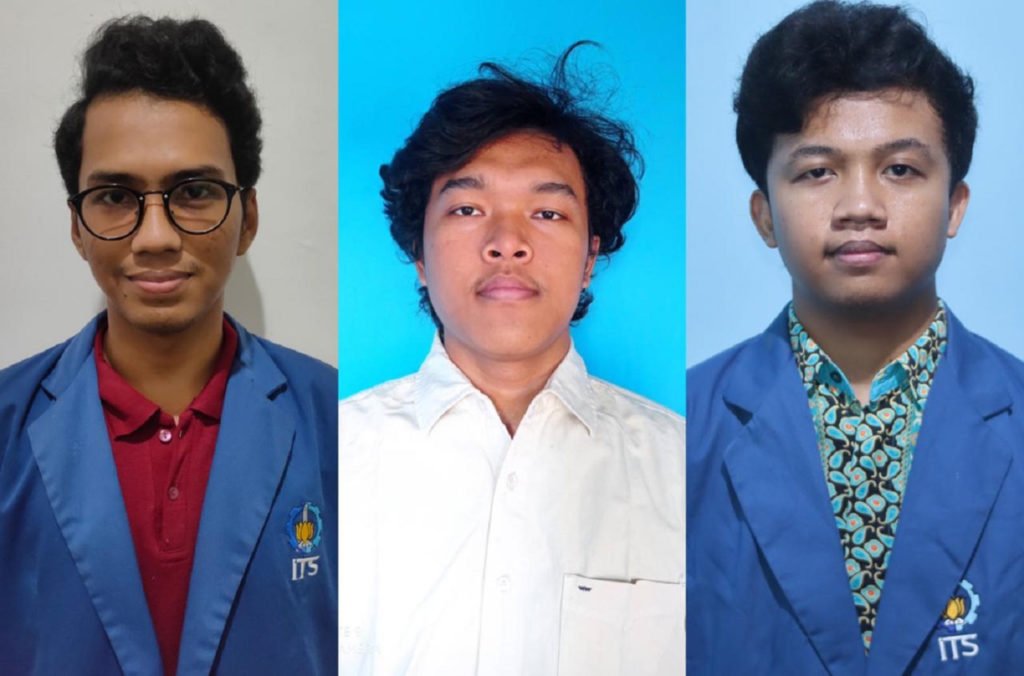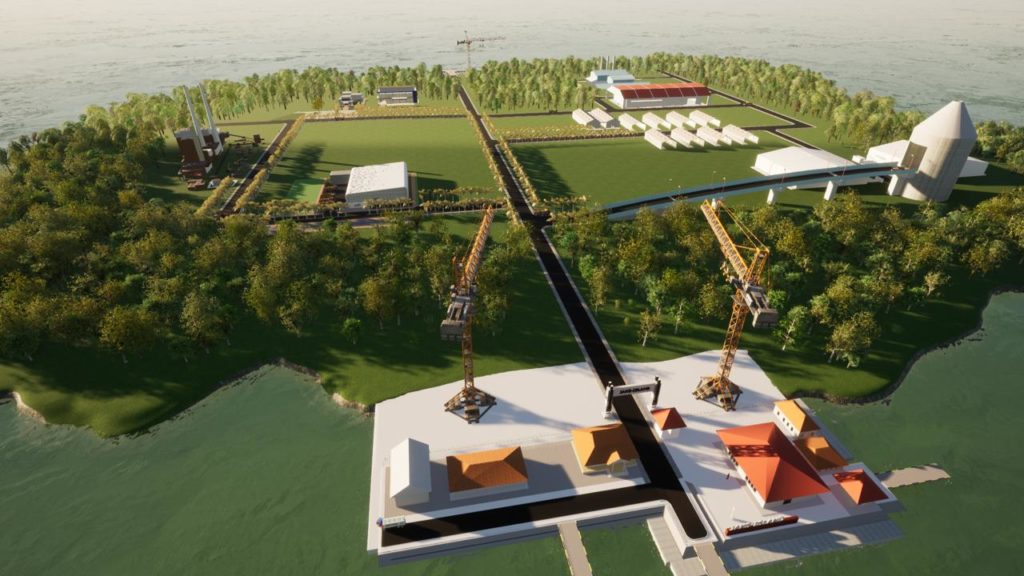Jaks-Island, Waste Management Area Design by ITS Team

(from left) Mario Dwi Prasetyo, Adam Mail, and Aldimas Kurniawan Pratama, the ITS student team that initiated the Jakarta Smart Island (Jaks-Island) innovation
ITS Campus, ITS News – Various programs and solutions continue to be developed to treat waste due to the accumulation of trash that continues to increase every day effectively and sustainably. Thinking about this, the Institut Teknologi Sepuluh Nopember (ITS) student team initiated an Internet of Things (IoT)-based waste management area innovation and won the first prize in the Essay Competition in the SejutaCita Youth Innovation Challenge 2021.
Named Jakarta Smart Island (Jaks-Island), the innovations contained in this scientific paper were initiated by Mario Dwi Prasetyo (Department of Electrical Engineering), Adam Mail (Department of Electrical Engineering), and Aldimas Kurniawan Pratama (Department of Architecture). The triumvirate, who are members of the Puyer Team, offers a waste management system by targeting the Thousand Islands area, Jakarta, as a pilot area.
As a team leader, Mario Dwi Prasetyo admitted that the idea arose out of anxiety related to the threat of an extraordinary increase in waste accumulation, especially in DKI Jakarta. He revealed that the Bantar Gebang Integrated Waste Disposal Site (TPST) is predicted to no longer accommodate DKI Jakarta’s waste for 2021. “It is undeniable, the Covid-19 pandemic has also added a large amount of medical waste,” he added.
Therefore, Mario continued, Jaks-Island provided a solution in the form of an area design specifically built to treat waste with a series of methods, ranging from recycling, composting, pyrolysis, larval maggots, to a Waste Power Plant (PLTSa). “Waste processing activities on the island will be monitored, controlled, and recorded using a network of devices connected to the internet,” he explained.
Mario said the superior method in Jaks-Island is PLTSa. This infrastructure will carry out combustion to produce hot steam that drives a turbine generator to produce electrical energy. “The PLTSa in Jaks-Island is capable of producing up to 3,078 Mwh of power,” he added.

Jaks-Island Design as an island that manages the waste in an integrated manner
Furthermore, Mario revealed the working system of another method, namely pyrolysis, which can break down the chemical structure of the waste to get the final result in the form of a diesel fuel substitute. Meanwhile, other methods such as composting, maggot larvae, and recycling materials made from glass, paper, rubber, and metal will produce industrial raw materials distributed to partner agencies.
Mario admitted that the selection of the island as the site for the design of the waste management area was intended to minimize pollution, disease, and other possible problems. In addition, the island area developed by Jaks-Island also has the potential to increase local revenue through waste processing by distributing electricity, producing oil, and selling industrial products.
Of course, said Mario, in the Jaks-Island design, the realization of the area must be supported by various parties, such as the DKI Jakarta Government, the Ministry of Environment and Forestry (KLHK), related companies such as PT Pertamina, PT PLN, and PT Petrokimia, as well as educational institutions. , investors, and the private sector.
Mario and his team hope that Jaks-Island can make people aware of the condition of waste management that must be taken seriously and supported in terms of technology. “Hopefully, Jaks-Island will receive support from various parties and be implemented in real terms so that waste management can continue to be improved,” he said hopefully. (far/ITS Public Relation)
Reporter: Difa Khoirunisa
Related News
-
ITS Collaboration with BPBD East Java, Launching VR Disaster Simulation
ITS Campus, ITS News — Supporting anticipation of disasters and continuing to educate the public, Institut Teknologi Sepuluh Nopember
June 24, 2021 19:06 -
Supporting the Implementation of Innovative Ideas, ITS and IYSA Hold International Competition
ITS Campus, ITS News — Institut Teknologi Sepuluh Nopember (ITS) has once again proven its commitment to supporting the
June 24, 2021 19:06 -
ITS Maintains Informative Qualification for Five Consecutive Years at KIP Awards
ITS Campus, ITS News — Institut Teknologi Sepuluh Nopember (ITS) has once again successfully maintained its Informative Qualification predicate
June 24, 2021 19:06 -
ITS Strengthens Smart Eco-Campus through UI GreenMetric 2024
ITS Campus, ITS News — Institut Teknologi Sepuluh Nopember (ITS) has once again demonstrated its commitment to environmental concern
June 24, 2021 19:06
